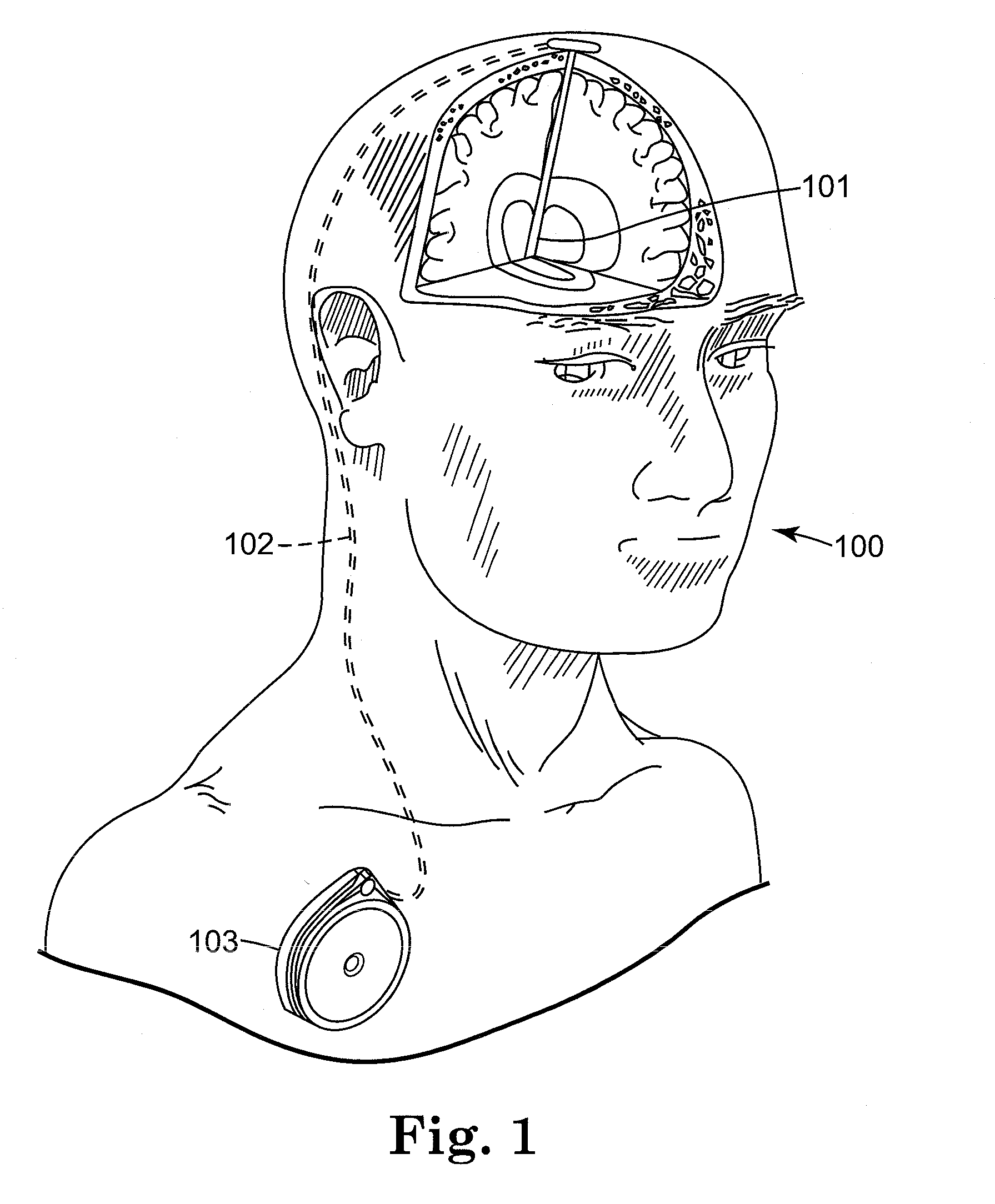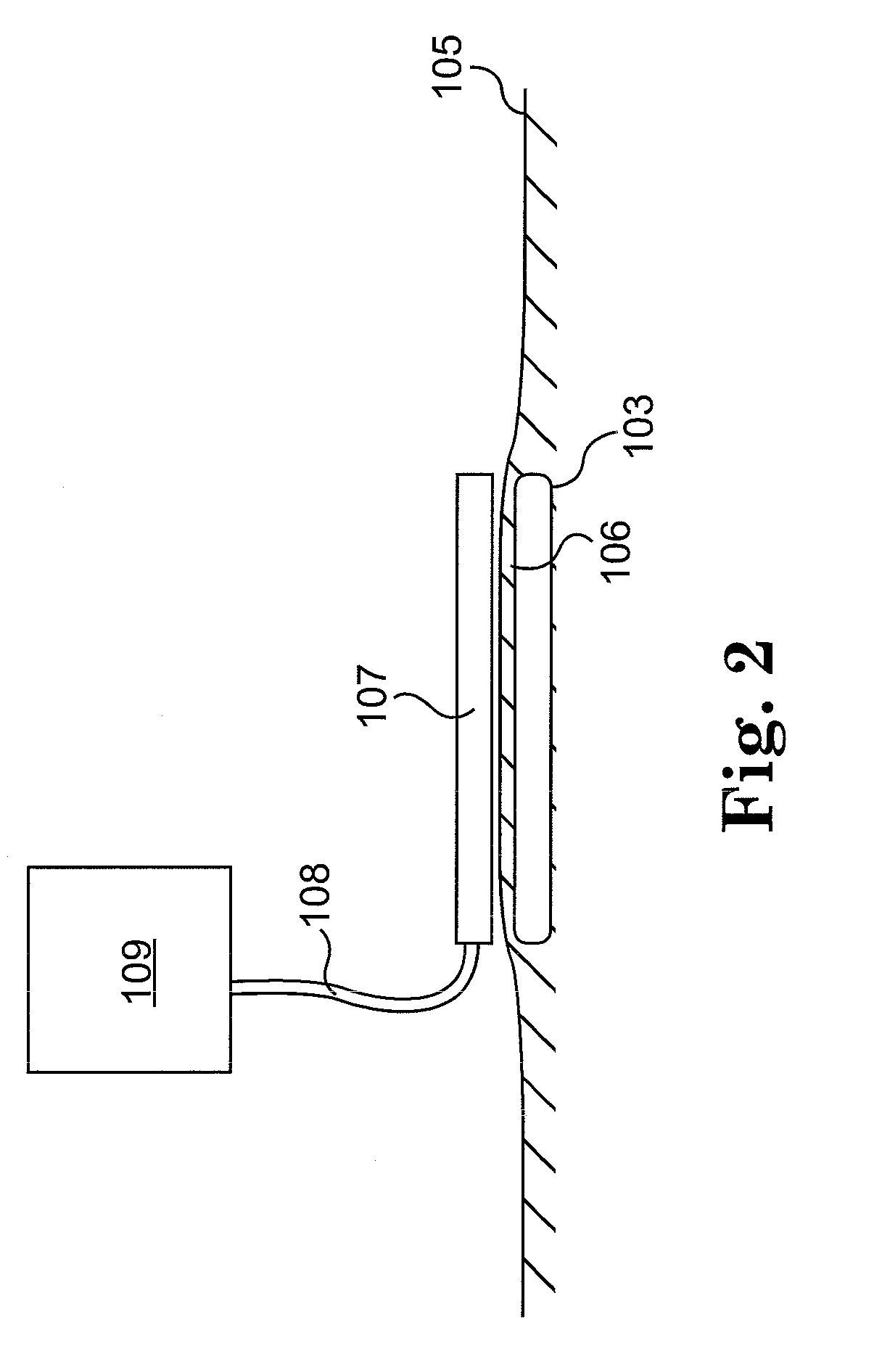Holster for charging pectorally implanted medical devices
a pectoral implanted medical device and charging ring technology, applied in the field of holsters for charging pectoral implanted medical devices, can solve the problems of disadvantageous electric wires perforating the skin, large inconvenience, and risk of infection, and achieve the effect of reducing the risk of infection
- Summary
- Abstract
- Description
- Claims
- Application Information
AI Technical Summary
Benefits of technology
Problems solved by technology
Method used
Image
Examples
Embodiment Construction
[0045] A preferred embodiment holster for charging pectorally implanted medical devices constructed according to the principles of the present invention is designated by the numeral 115 in the drawings, another embodiment holster for charging pectorally implanted medical devices constructed according to the principles of the present invention is designated by the numeral 215 in the drawings, another embodiment holster for charging pectorally implanted medical devices constructed according to the principles of the present invention is designated by the numeral 315 in the drawings, and another embodiment holster for charging pectorally implanted medical devices constructed according to the principles of the present invention is designated by the numeral 415 in the drawings.
[0046] The holsters 115, 215, 315, and 415 may be used to charge any suitable pectorally implanted medical device. The term “charge” refers to any type of charge including, but not limited to, an initial charge and...
PUM
 Login to View More
Login to View More Abstract
Description
Claims
Application Information
 Login to View More
Login to View More - R&D
- Intellectual Property
- Life Sciences
- Materials
- Tech Scout
- Unparalleled Data Quality
- Higher Quality Content
- 60% Fewer Hallucinations
Browse by: Latest US Patents, China's latest patents, Technical Efficacy Thesaurus, Application Domain, Technology Topic, Popular Technical Reports.
© 2025 PatSnap. All rights reserved.Legal|Privacy policy|Modern Slavery Act Transparency Statement|Sitemap|About US| Contact US: help@patsnap.com



